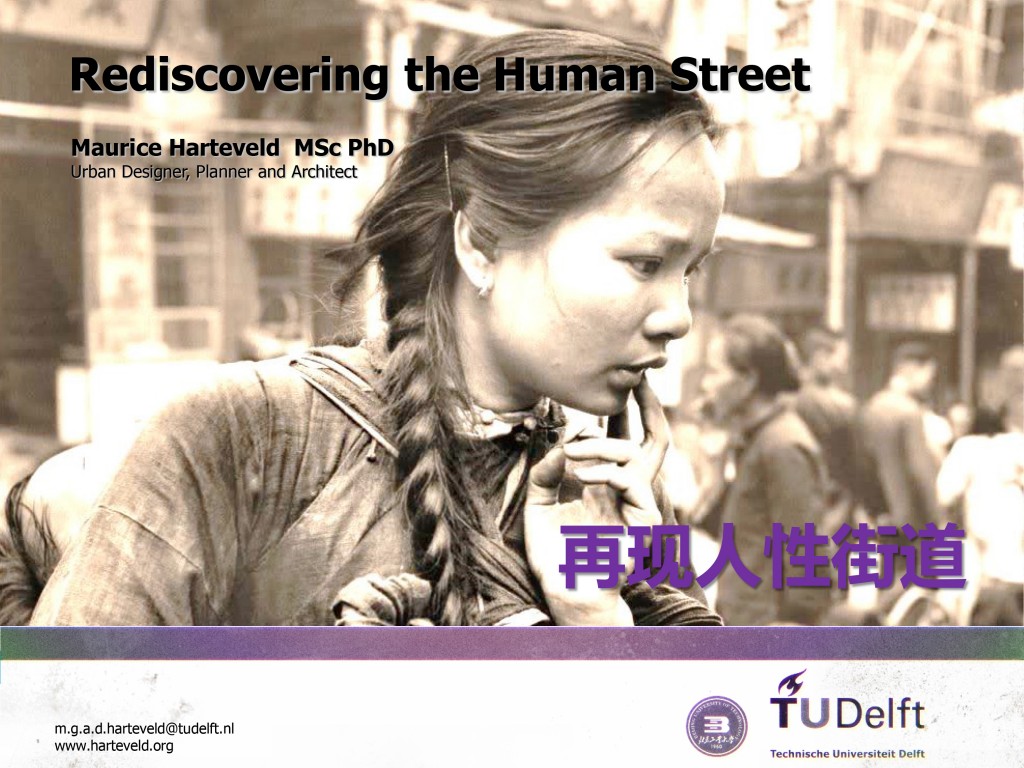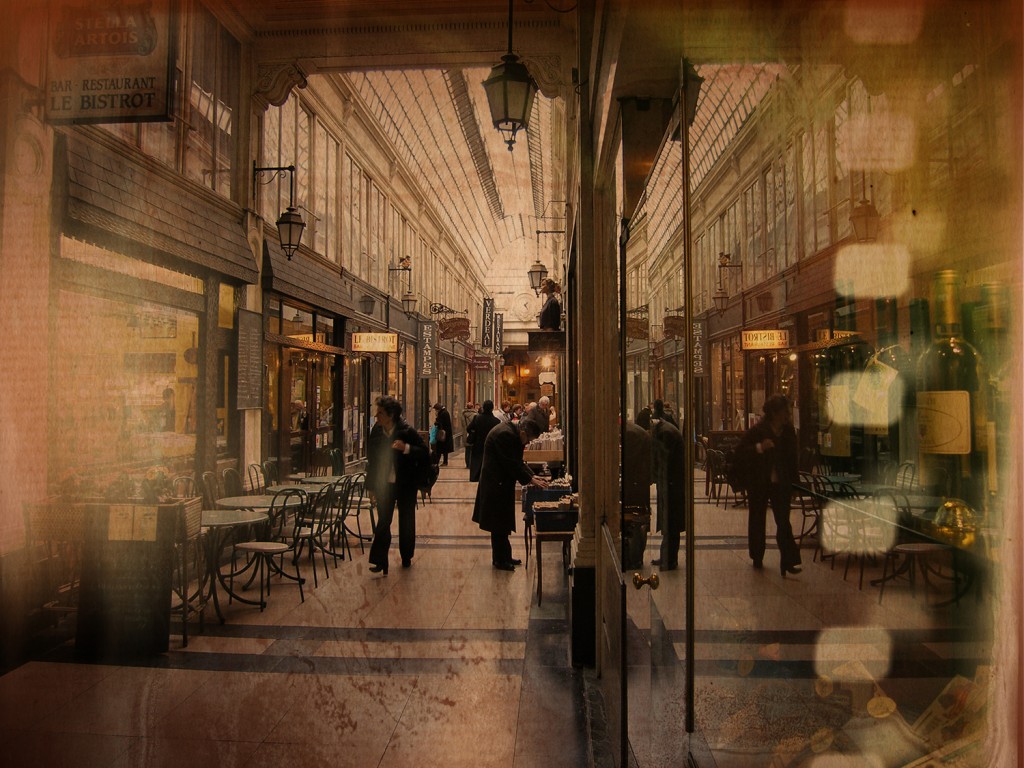Besides meetings with the authorities and the official events of the state visit, King Willem-Alexander of The Netherlands visits the ‘Next City Living Lab’, the Dutch pavilion at Beijing Design Week. The expo embodies innovation and creativity for a better urban future, it also aims to demonstrate the spirit and strengths of Dutch design: Delft University of Technology presents Reclaiming the Human Space to promote social sustainability and better standards of life. In this expo, the king is being informed on the future urban challenges in the People’s Republic, including humanisation of planning, integration of social groups, recreation of community places, and rehabilitation of daily-life environments. This agenda is exposed in the midst of other exhibitions from leading Dutch design firms including West8, OMA, MVRDV, NL Architects and UN Studio.
Category Archives: research
10yrs of Graduation Projects
Liveability and Public Space in the Happy City
9th September 2015, 8:45-10:30h
Lecture
Delft University of Technology
Room: IO-Bernd Schierbeek
Landbergstraat 15
Delft
My faculty in Delft is one of the world’s largest in the field of architecture and urban design. “It is a place that is buzzing with life from early in the morning until late at night, with four thousand people studying, working, designing, conducting research and acquiring and disseminating knowledge*.” In this environment, I have supervised quite some graduates in their final master thesis, all focussed on liveability and public space. What can we learn from them and how to proceed?
Liveability and Public Space in the Happy City [download pdf]
Rediscovering the Human Street
Interior Public Space
Mazes in the Network
Interior Public Space
On the Mazes in the Network of an Urbanist
For centuries – and increasingly often today – the term ‘public space’ has been a synonym for government-owned spaces, open for all, and known by everyone. According to me, this is a complete misnomer. The spaces that people actually use are forgotten. Subordinated and neglected, considered unimportant by many urban theorists; the thinking on public interiors as day-to-day public space is in a poor way. The theorists who do pay attention to public spaces almost always accord them a separate status, and describe them as ‘semi-public’ or ‘collective’ spaces, neither public nor private. I base my views on the influence that people themselves have on the public character of a space.
Interior public spaces are exemplary. They are certainly not have become a new phenomenon, as some contemporary researchers suppose. They have always played an important part in various social-spatial changes and have been crucial to cities and their culture. I have studied the development of Graeco-Roman thinking on public space up to present day, and measured it against architectural and urban design practice. My research is based not just on theoretical premises or on political aims. It is based on the many designs in practice, which have been realised in various Indo-European cities, in the Turkish and Arabian countries in their periphery and in the Japanese capital, during and after the period of ‘westernisation’. My thesis can therefore also be seen as the scientific journey of a designer, close to day-to-day practice.
I believe that everyone makes a space, not just a designer. This involves a redirection of our thinking: Until theorists come to respect all public spaces and understand the complex network of people, they will lose their way in their self-made mazes.
see:
Harteveld, Maurice (2014) Interior Public Space, On the Mazes in the Network of an Urbanist, A Scientific Journey of a Designer, Following the Evolution of Greco-Roman Thoughts, Through Some Remarkable Indo-European Cities, Including those in The Americas, Crossing the Turkic and Arabic Spheres in their Proximity, and Abridging to the Japanese Capital as Introductory Exemplar, to Reconstruct Today’s Reasoning on Public Interiors by Means of Defining Types, Interrelating People and Actions, Describing Socio-Spatial Transformations, and Comprehending Cultural Meaning, In Nine Books; Delft: Delft University of Technology, Faculty Architecture, Urbanism and Building Sciences
CSI Urban Space
Given the changing characteristics of public and private urban spaces, the lecture covers a wide range of city-related topics following a two-folded target. As urban space represents the interface of communication and urban investigations, it is crucial to bring participants nearer to the concept of it, including crossing boundaries. The second part of the lecture block will deal with the role of urban planning in shaping urban space following its redefinition. With this insight, participants would understand the role of urban space and the formal ways of planning it.
The Curse of Bigness
There are some who glorify the state or quality of bigness. This seems to be something characteristic of the modern age – the first hosannas began to resound around the dawn of the metropolis. We see it in the writings of Louis Sullivan and in the statements made by Le Corbusier. They like buildings to be big. Bigness is their quality. The notion of ‘bigness’, as pushed forward more recently by among others Rem Koolhaas, is based on complete disconnection between the interior and the exterior. “Bigness is no longer part of any urban tissue”, he thinks. Context – the relationship with the building’s surroundings – is supposedly irrelevant. Nonsense! His theorem is contradicted by studies of existing cases. When a building exceeds a certain size and becomes a large-scale structure, public interiors are created. The increase in the number of people using both these indoors and the outdoor space links big buildings closely to their surroundings, more then do small-scale buildings, and thus far from being isolated, big buildings become more connected. In their urban environments, the interaction becomes visible and multi-level or privately-owned public space is created within big buildings. New public interiors extend the outdoor network and thereby give the building a fine-meshed structure. In essence, as the interiors become more public, the small scale is introduced into the building. The building may be big purely in terms of size, but in many ways it is quite as diverse as any part of the city.
On Public Interior Space
In the city today, we meet in public atria and shop in malls, we move along covered walkways and go from street to street by taking shortcuts through the buildings of a city block. In recent decades, the amount and proportion of public space within urban buildings has steadily increased, with much of it forming part of a larger interior and exterior pedestrian network. Yet, although interior public space has become an important constituent of the contemporary city and of our urban experience, it is rarely designed as such. Prompted by this disconnection, Maurice Harteveld has followed different leads to examine contemporary urban design in relation to public interiors. Through this research, he has documented in particular the urban analyses and architectural designs of Robert Venturi and Denise Scott Brown, in which interior public space is accorded significant and multiple roles. Ideas pioneered by Venturi and Scott Brown have become absorbed within architectural practice, notably their use of the Nolli Map introduced in their 1972 study of Las Vegas. Similarly, the concept of the ‘rue interieur’ seen in their earliest projects, has matured in their later work to include an internal street imbedded in a network of urban public spaces and pathways, both interior and exterior. However, although they refer to interior public space frequently in their writing, Venturi and Scott Brown have yet to describe their views on it in any great detail; a more focused examination that the following dialogue between Maurice Harteveld and Denise Scott Brown seeks to provide.
Design of Public Space
The design of the public space is one of the fundamental assignments for professionals involved in urban design and planning. Constructing and (re)forming the network of public space is even conditional for any kind of urbanity. It includes more than just the lay-out and beauty of spaces, as the design of public space has to be able to facilitate new kinds of usage, preconditioning any plausible development of multiple and complex use, and in general housing the dynamics for social change and exchange.
Continue reading
Viva Las Vegas
In explorations of the notions of public space, public interiors are generally seen as undemocratic and more private spaces. This is based on the Roman distinction between publicus and privatus, but making public space, as a public case, refer primarily to res publica. – On the other hand, there is a related Roman public law that deals with the common interest of urban society, and could include cases of interior public space. Most sociological research in contemporary daily life reveals these spaces as public. For urbanism, this research can be seen as the social context, because the urbanist is primarily focused on the city: the civitas, and not the whole societas. More specifically, for urban designers who deal with public space, it traditionally means focusing on the outdoor space, and although this is almost always synonymous with the public domain or publicly owned space, I believe that public space can be more than this. For urbanism this means there is a need for new understanding and an extension of the design task..


